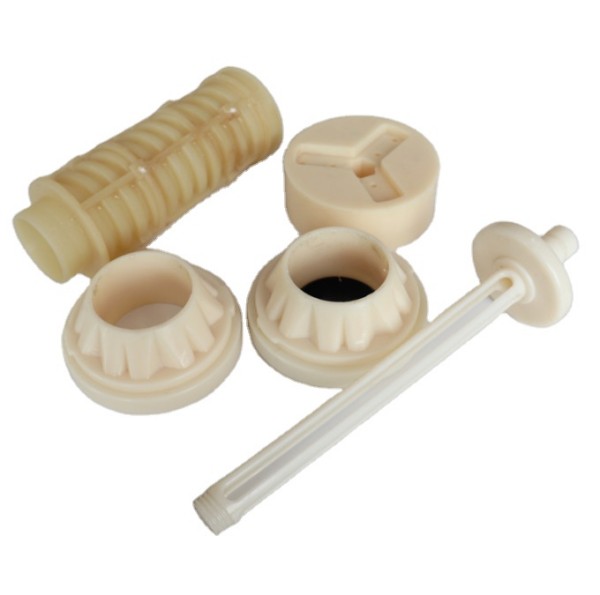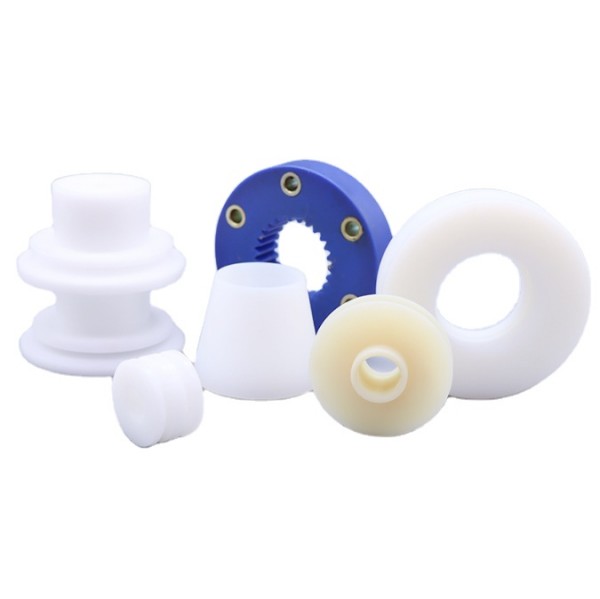The Nylon Family of Engineering Plastics
Engineering plastics are a class of high-performance polymer materials that can be used as structural and functional materials, subjected to mechanical pressure over a wide temperature range, and used in more demanding chemical and physical environments. It is a class of high-performance materials with balanced strength, toughness, heat resistance, hardness, and anti-aging properties. The five general engineering plastics are: PA (polyamide), PC (polycarbonate), PBT / PET (polybutylene terephthalate and polyethylene terephthalate), PPO (polyphenylene ether, also known as PPE), POM (paraformaldehyde).
So, why is nylon engineering plastics is the first of the five engineering plastics?
Polyamide, also known as nylon (Nylon), is a macromolecule containing amide groups in the repeating groups of the main chain (-NHCO-) of polymers in general; nylon is the largest production of engineering plastics, the most varieties, the most widely used varieties. English name Polyamide, referred to as PA, polyamide varieties: PA6, PA66, PA11, PA12, PA610, PA612, PA1010, PA46, nylon 6T, nylon 9T, MXD-6 and so on. Polyamide synthesis: generally available from amino acid polycondensation, lactam ring-opening polymerization or by the corresponding dibasic acid and dibasic amine polycondensation.
Nylon advantages:
1.High mechanical strength, good toughness, high tensile and compressive strength. Than the tensile strength is higher than metal, than the compression strength and metal is not similar, but it is not as rigid as metal. Tensile strength is close to the yield strength, more than twice as high as ABS. Impact, stress vibration absorption ability, impact strength is much higher than the general plastic, and better than acetal resin.
2.Outstanding fatigue resistance, the parts by many repeated folding can still maintain the original mechanical strength. Common escalator handrails, new bicycle plastic wheel rims cycle fatigue role is very obvious occasions often apply PA.
3.High softening point, heat-resistant (such as nylon 46, high crystallinity nylon heat distortion temperature is high, can be used for a long time at 150 degrees. PA66 after glass fiber reinforced, its heat distortion temperature reaches more than 250 degrees).
4.Smooth surface, small coefficient of friction, wear-resistant. For the activity of mechanical components, self-lubricating, low noise, in the friction role is not too high when can not add lubricants to use; if you really need to use lubricants to reduce friction or to help dissipate heat, then the water oil, grease and so on can be selected. Thus, it has a long service life as a transmission part.
5.Corrosion resistance, very resistant to alkali and most of the salt solution, but also resistant to weak acids, oil, gasoline, aromatic compounds and general solvents, aromatic compounds are inert, but not resistant to strong acids and oxidants. It is resistant to gasoline, oil, fat, alcohol, weak alkalis, etc. and has good anti-aging ability. It can be used as packaging material for lubricants and fuels.
Disadvantages of nylon:
1. Easy to absorb water. Water absorption will affect the size and accuracy of the parts to a certain extent, especially thin-walled parts of the thickening of the greater impact; water absorption will also greatly reduce the mechanical strength of the plastic. In the selection of materials, should take into account the use of the environment and other components with the impact of precision.
2. Poor light resistance. In the long-term high-temperature environment will be oxidized with the oxygen in the air, the beginning of the color brown, followed by broken surface cracking.
3. Injection molding technology requirements are more stringent: the presence of trace amounts of water will cause great damage to the molding quality; due to thermal expansion so that the dimensional stability of the product is more difficult to control; the existence of sharp corners in the product will lead to stress concentration and reduce the mechanical strength; wall thickness, if uneven will lead to distortion, deformation of the parts; the parts of the post-processing equipment requires high precision.
4. It will absorb water, alcohol and dissolve, not resistant to strong acids and oxidizers, can not be used as acid-resistant materials.


Process characteristics of nylon
1. Rheological properties of nylon: most of nylon is crystalline resin, when the temperature exceeds its melting point, its melt viscosity is small, the melt has excellent fluidity, and it should be prevented from overflowing. At the same time, due to the rapid condensation of the melt, the material should be prevented from blocking the nozzle, runner, gate and other products caused by the phenomenon of insufficient. Mould overflow value of 0.03, and the melt viscosity of the temperature and shear changes are more sensitive, but more sensitive to temperature, reduce the melt viscosity from the barrel temperature to start.
2. Nylon's water absorption and drying: nylon's water absorption is large, wet nylon in the molding process, the performance of a sharp drop in viscosity and mixed with bubbles appear on the surface of the product silver, the resulting mechanical strength of the product decreased, so the material must be dry before processing.
3. Crystallinity: in addition to transparent nylon, nylon is mostly crystalline polymer, high crystallinity, products tensile strength, abrasion resistance, hardness, lubricity and other properties are improved, the coefficient of thermal expansion and water absorption tends to decline, but the transparency and impact resistance properties are not good. Mold temperature has a greater impact on crystallization, high mold temperature crystallinity is high, low mold temperature crystallinity is low.
4. Shrinkage: similar to other crystalline plastics, nylon resin shrinkage problem, general nylon shrinkage with the crystallization of the relationship between the largest, when the crystallinity of the product products will increase the contraction of products, in the molding process to reduce the mold temperature \ to increase the injection pressure \ to reduce the temperature will reduce the contraction of the products, but the products of the internal stress increases the ease of deformation. For example, non-glass fiber reinforced PA6 and PA66 shrinkage rate of 1.5-2%, after adding glass fiber can make the shrinkage rate down to 0.3% to 0.8%.
5. Molding equipment: nylon molding, the main attention to prevent “nozzle salivation phenomenon”, so the processing of nylon materials generally use self-locking nozzle. In addition, it is best to choose the appropriate plasticizing capacity of the larger injection molding machine.
6. Products and molds
* Products wall thickness: nylon flow length ratio of 150-200, nylon products wall thickness is not the bottom of the 0.8mm in general between 1-3.2mm to choose, and the contraction of products and products related to the wall thickness, the thicker the wall shrinkage.
* Exhaust: nylon resin overflow edge value of 0.03mm or so, so the exhaust hole slot should be controlled below 0.025.
* Mould temperature: products with thin wall difficult to mold or require high crystallinity mold heating control, require products with a certain degree of flexibility generally use cold water temperature control. Runner and gate gate aperture should not be less than 0.5 * t (here t is the thickness of the molded part). For submerged gates, the minimum diameter of the gate should be 0.75mm.
1. POM and PA66 gears are noisy, wear resistance and fatigue resistance are not enough problems, POM gears are easy to break the teeth of the problem.
2. PA12 and TPEE gears, too soft torque is too small, wear resistance is not enough, in 60 degrees Celsius and above, the torque drop is faster.
3. The corrosion resistance of POM and PA66 gears is not enough, and POM gears and injection molding function parts are easy to wear and chalking problems.
4. Nylon 46 gears are not enough noise reduction, gear torque and size is affected by water.
5. MC nylon wear fatigue resistance is not enough, hygroscopicity and lead to gear torque and dimensional stability is not enough, heat creep performance is not enough, noise reduction performance is still to be improved and other issues.









